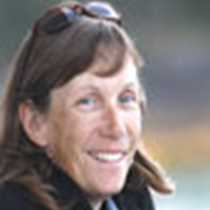Glacier Bay National Park & Preserve, Alaska
Glacier Bay National Park, 3.3 million acres in size and mostly wilderness is only accessible by plane or boat . It is a living laboratory for studying glacial succession, and a haven for wildlife.
8:00 AM - Steller sea lions, puffins, common murres, black legged kittiwakes, and pigeon guillemots lured us away from our breakfasts and outside to enjoy the sights and sounds of the South Marble Islands. Isolated rocks, big enough for birds to nest and sea lions to haul out, but small enough to be free of land-based predators, are what make these islands such a special place.
10:00 AM - A brown bear walking along the shoreline at low tide, flipping rocks and eating what it found underneath. The bear’s strength was given away by the size of the rocks it could flip over. With one paw it could flip more than any of us could probably life with two hands. With two paws it could flip very large boulders. When it really had to work it would wrap its whole body around the rock and push with its hind legs to topple rocks that were more than half its size. There was an auditory aspect to it as well. We were quietly floating close enough to shore that we could hear the splashing of rocks as they were flipped and the crunching of the blue mussels as the bear walked along. This was only one of six brown bears we saw today. Many of the others were out foraging at low tide too.
11:00 AM - Mountain goats with kids are perched high on the cliffs of Gloomy Knob. Specially adapted feet make them comfortable running and jumping over rocks where we humans would need ropes.
12:15 PM - Another brown bear flipping mussel-covered rocks. A scan of the shoreline showed the path of this or maybe another bear. If the rock looked free of mussels it was because it had been recently flipped over. I wonder how the mussels deal with this change in their environment?
1:30 PM - Margerie and Grand Pacific Glaciers are in sight. We are mesmerized for an hour as we approach. We watch the ice in the water, a bald eagle and harbor seals floating on small icebergs, the reflection of the mountains in the water, and of course the glacier itself.
2:45 PM – We are headed back down the bay, but not before seeing Lamplugh and Reid Glaciers, another brown bear, and a humpback whale carcass that washed up on the beach in April.
8:00 PM – During dinner, from our tables, we see humpback whales in the distance as we head to the Park headquarters at Bartlett Cove.
8:45 PM - We are headed off the ship for a hike in the forest that now stands where glaciers sat just 200 years ago. It is 75 minutes until sunset and much longer until the 2 or so hours of dark that we will have.
I visited this place 22 years ago on my first vacation in Alaska. On that visit I spent 10 days kayaking through the Park. On today’s visit we might have “only” been here for 17 hours, but we have traveled the same distance and seen more wildlife than I did in those 10 days so many years ago. The one thing that has not changed is the magic of being some place that is so beautiful, wild and pristine; a gem of our National Park System.



